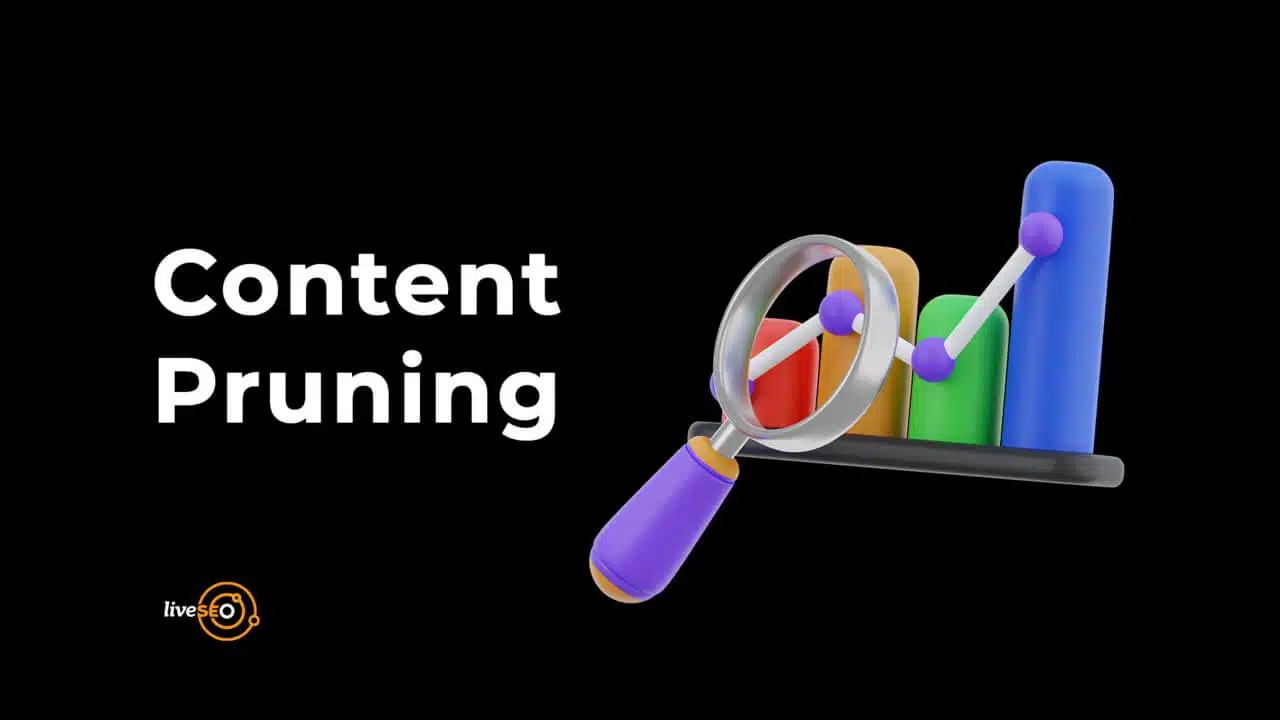-
Table of Contents
- Introduction
- How Content Pruning and Cleanup Can Improve Your SEO Rankings
- The Benefits of Regularly Pruning and Cleaning Up Your Content
- How to Identify Content That Needs Pruning and Cleanup
- The Impact of Content Pruning and Cleanup on Your SEO Strategy
- Tips for Effectively Pruning and Cleaning Up Your Content for SEO Purposes
- Conclusion
“Content Pruning and Cleanup: The Key to Unlocking SEO Success!”
Introduction
Content pruning and cleanup is an important part of SEO (Search Engine Optimization). It involves the removal of outdated, irrelevant, or duplicate content from a website in order to improve its overall search engine rankings. Content pruning and cleanup can help to improve the user experience, reduce page load times, and make it easier for search engines to crawl and index a website. This article will discuss the SEO role of content pruning and cleanup, and how it can help to improve a website’s search engine rankings.
How Content Pruning and Cleanup Can Improve Your SEO Rankings

Content pruning and cleanup can be an effective way to improve your SEO rankings. By removing outdated, irrelevant, or duplicate content, you can help ensure that your website is providing the most up-to-date and relevant information to your visitors. This can help to improve your website’s visibility in search engine results pages (SERPs) and increase your overall SEO rankings.
Content pruning involves removing any content that is outdated, irrelevant, or duplicated. This can include blog posts, webpages, images, videos, and other content. By removing this content, you can help ensure that your website is providing the most up-to-date and relevant information to your visitors. This can help to improve your website’s visibility in SERPs and increase your overall SEO rankings.
Content cleanup is also important for SEO. This involves ensuring that all of your content is properly formatted and optimized for search engines. This includes ensuring that all of your content is properly tagged with relevant keywords, that all of your images are properly optimized, and that all of your links are working properly. By ensuring that all of your content is properly optimized, you can help to improve your website’s visibility in SERPs and increase your overall SEO rankings.
Content pruning and cleanup can be a time-consuming process, but it can be an effective way to improve your SEO rankings. By removing outdated, irrelevant, or duplicate content, and ensuring that all of your content is properly optimized, you can help to improve your website’s visibility in SERPs and increase your overall SEO rankings.
The Benefits of Regularly Pruning and Cleaning Up Your Content
Regularly pruning and cleaning up your content is an important part of maintaining a successful website. It helps to ensure that your content is up-to-date, relevant, and engaging for your readers. Here are some of the benefits of regularly pruning and cleaning up your content:
1. Improved User Experience: Pruning and cleaning up your content helps to make it easier for users to find the information they need. By removing outdated or irrelevant content, you can make sure that your website is organized and easy to navigate. This will help to improve the overall user experience and make it more likely that visitors will stay on your site and return in the future.
2. Increased Search Engine Rankings: Search engines use algorithms to determine which websites are most relevant to a user’s search query. By regularly pruning and cleaning up your content, you can make sure that your website is optimized for search engine rankings. This will help to increase your visibility and make it more likely that users will find your website when they search for related topics.
3. Improved Brand Image: Pruning and cleaning up your content can help to improve your brand image. By removing outdated or irrelevant content, you can make sure that your website is up-to-date and reflects your current brand values. This will help to create a positive impression of your brand and make it more likely that users will trust your website.
Overall, regularly pruning and cleaning up your content is an important part of maintaining a successful website. It helps to ensure that your content is up-to-date, relevant, and engaging for your readers. This will help to improve the user experience, increase search engine rankings, and improve your brand image.
How to Identify Content That Needs Pruning and Cleanup
Content pruning and cleanup is an important part of maintaining a website or blog. It helps to ensure that the content is up-to-date, relevant, and of high quality. Identifying content that needs pruning and cleanup can be a daunting task, but there are a few key indicators that can help you determine which content needs to be addressed.
1. Outdated Content: Content that is no longer relevant or accurate should be removed or updated. This includes information that is no longer applicable, such as outdated product information, or content that is no longer accurate, such as outdated statistics.
2. Poor Quality Content: Content that is poorly written, contains errors, or is otherwise of low quality should be removed or rewritten. This includes content that is difficult to read, contains typos or grammatical errors, or is otherwise not up to the standards of the website or blog.
3. Duplicate Content: Content that is duplicated or very similar to other content should be removed or consolidated. This includes content that is identical or nearly identical to other content on the website or blog, as well as content that is similar but not quite the same.
4. Irrelevant Content: Content that is not relevant to the website or blog should be removed. This includes content that is off-topic, does not fit the overall theme of the website or blog, or is otherwise not relevant to the purpose of the website or blog.
By identifying content that needs pruning and cleanup, you can ensure that your website or blog is up-to-date, relevant, and of high quality. This will help to improve the user experience and ensure that your website or blog is successful.
The Impact of Content Pruning and Cleanup on Your SEO Strategy
Content pruning and cleanup are essential components of any successful SEO strategy. Pruning and cleanup involve removing outdated, irrelevant, or low-quality content from your website, while also ensuring that the content that remains is optimized for search engine visibility.
Content pruning and cleanup can have a significant impact on your SEO strategy. By removing outdated or irrelevant content, you can improve the overall quality of your website and make it easier for search engines to crawl and index your pages. This can help to improve your website’s ranking in search engine results pages (SERPs). Additionally, by optimizing the content that remains, you can ensure that your website is providing the most relevant and useful information to users, which can help to improve your website’s visibility and click-through rate.
Content pruning and cleanup can also help to improve the user experience on your website. By removing outdated or irrelevant content, you can ensure that users are only presented with the most relevant and useful information. This can help to improve user engagement and reduce bounce rates, which can have a positive impact on your website’s ranking in SERPs.
Finally, content pruning and cleanup can help to improve the speed and performance of your website. By removing outdated or irrelevant content, you can reduce the size of your website and make it easier for search engines to crawl and index your pages. This can help to improve your website’s loading speed, which can have a positive impact on your website’s ranking in SERPs.
In summary, content pruning and cleanup can have a significant impact on your SEO strategy. By removing outdated or irrelevant content, optimizing the content that remains, improving the user experience, and improving the speed and performance of your website, you can help to improve your website’s ranking in SERPs and increase your website’s visibility and click-through rate.
Tips for Effectively Pruning and Cleaning Up Your Content for SEO Purposes
1. Identify Low-Quality Content: Start by identifying any low-quality content on your website. This could include outdated information, duplicate content, or content that is not relevant to your target audience.
2. Remove Unnecessary Content: Once you have identified low-quality content, it is time to remove it. This will help to reduce the amount of content on your website and make it easier for search engines to crawl and index your pages.
3. Update Existing Content: After removing unnecessary content, it is important to update existing content. This could include adding new information, updating outdated information, or rewriting content to make it more relevant to your target audience.
4. Optimize Content for SEO: Once you have updated existing content, it is important to optimize it for SEO. This could include adding keywords, optimizing titles and meta descriptions, and adding internal and external links.
5. Monitor Content Performance: Finally, it is important to monitor the performance of your content. This could include tracking page views, time on page, and bounce rate. This will help you identify which content is performing well and which content needs to be improved.
Conclusion
Content pruning and cleanup is an important part of SEO that should not be overlooked. It can help to improve the overall quality of content, reduce page load times, and improve the user experience. Additionally, it can help to improve the visibility of a website in search engine results pages, as well as help to ensure that content is up-to-date and relevant. Content pruning and cleanup should be an ongoing process, as it can help to ensure that a website remains competitive in the ever-changing digital landscape.



